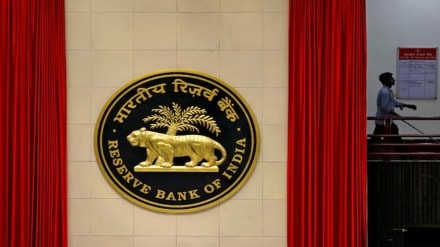The Reserve Bank of India’s (RBI) draft guidelines permitting banks to offer acquisition financing, released on October 24, could be a game-changer, believe some public sector banks, as they gear up to leverage their international presence to actively participate in large-ticket M&A deals.
“This opens up a significant strategic opportunity for us to deepen our global footprint and support cross-border consolidation with greater agility and scale,” said Ashwani Kumar, MD & CEO, UCO Bank.
Agreeing with him, Rajneesh Karnatak, MD & CEO, Bank of India, said the relaxation on acquisition financing marks a major step in corporate credit and opens a significant new business avenue for banks. “The move allows banks to directly fund mergers, acquisitions, and corporate takeovers. We are looking forward to leveraging our global presence, including our operations in the GIFT City, to support such transactions.”
“By enabling acquisition finance, the RBI is strengthening India’s financial sovereignty. Domestic banks now have the tools to support big-ticket deals with speed, insight, and structure, reducing dependence on foreign capital and shadow lenders,” said Sudhakara Reddy, Associate Professor at IIM Calcutta. He believes this move will compel banks to shift from transactional lending to strategic financing. “Acquisition finance isn’t about assets; it’s about backing business control and future growth. It demands sharper judgement and a deeper understanding of corporate ambition.” He feels the RBI’s move opens up a credit opportunity of Rs 1-5 lakh crore for banks.
The RBI is clearly acknowledging the evolution of the Indian M&A market, but it’s doing so with a lot of guardrails. “The guidelines are designed to ensure that only credible, listed entities with proven track records can access this form of financing,” says Sanjay Agrawal, Senior Director at CareEdge Ratings.
“On a big picture basis, it doesn’t answer all the questions. As an Indian bank, we would want to look at how we can finance acquisitions by domestic corporates or even foreign corporates who are acquiring in India, said Paritosh Kashyap, Wholetime Director at Kotak Mahindra Bank. “It (new norms) doesn’t probably address all the requests we had made earlier. There are a few suggestions that the RBI has asked for, so we will give the suggestions in due course.”
Under the proposed rules, only listed companies that have posted profits for three consecutive years will be eligible for acquisition loans. The stipulation that the acquiring company or its special purpose vehicle (SPV) must be a listed entity with a satisfactory net worth has drawn criticism for being overly restrictive. “This is highly restrictive, as unlisted Tata Sons acquiring Air India would be prevented under this clause,” said a senior banker from a private sector lender.
Similarly, the RBI’s mandate for a minimum 30% equity from the acquirer’s own funds has also provoked concerns. “The regulation is overly prescriptive,” said the banker, stating that promoters often use instruments like commercial papers to fund SPVs, classified as equity at the SPV level, but debt at the promoter level. “The RBI should simply require 30% from promoter resources, regardless of form,” he suggests, endorsing flexibility over rigid structuring.
“Likewise, the RBI’s 3:1 debt-to-equity cap post acquisition has raised concerns, especially for deals involving distressed assets or entities with negative net worth like Air India or Bhushan Steel,” noted a director at the domestic listed credit rating agency. He believes that such a rigid metric overlooks earning potential and undervalues strategic acquisitions. “Net worth is often an obsolete concept and fails to capture the true market value of assets, particularly in the case of holding companies,” he adds.
The guidelines cap bank’s exposure at 10% of their Tier 1 capital, reinforcing the RBI’s cautious stance. This ceiling ensures that acquisition financing remains a controlled activity, preventing over-leveraging and preserving capital adequacy. According to Capitaline, 32 public and private sector banks have a combined net worth of close to Rs 28 lakh crore, making nearly Rs 2.8 lakh crore available for acquisition financing.
“Banks are being positioned as fixed-rate capital providers, not bearers of end-of-tail risk. That’s a critical distinction. The RBI wants to avoid scenarios where banks are left holding the bag if a deal goes south,” noted Agrawal of CareEdge.
Experts feel the draft framework is currently focused on domestic acquisitions i.e. Indian companies acquiring other Indian entities. It remains unclear whether Indian banks will be permitted to fund overseas acquisitions under this regime. The Tata-Corus deal, for instance, which involved offshore financing, would fall outside the scope of the new guidelines.
India’s M&A market has matured considerably over the past decade, driven by infrastructure investments, the rise of private credit, and the increasing sophistication of Indian business houses. Foreign banks have traditionally played a dominant role in acquisition financing, often leveraging their overseas branches to structure such deals. The RBI’s move aims to level the playing field for domestic banks and reduce reliance on foreign capital.
Industry experts believe the guidelines could help address longstanding challenges such as interest rates and limited funding availability. By expanding the pool of eligible borrowers and enabling structured debt solutions, the RBI hopes to catalyse more strategic consolidation across sectors.
“The private credit market is developing, and this move by the RBI complements that evolution,” Agrawal said. “It’s a step towards building a more robust, diversified financing ecosystem for corporate India.”
“While the current framework is restrictive, and future iterations of the guidelines may expand eligibility and scope, acquisition finance will push lenders to evolve, giving banks a chance to become partners in industrial transformation, not just providers of capital,” said Reddy.
